Physical Address
304 North Cardinal St.
Dorchester Center, MA 02124
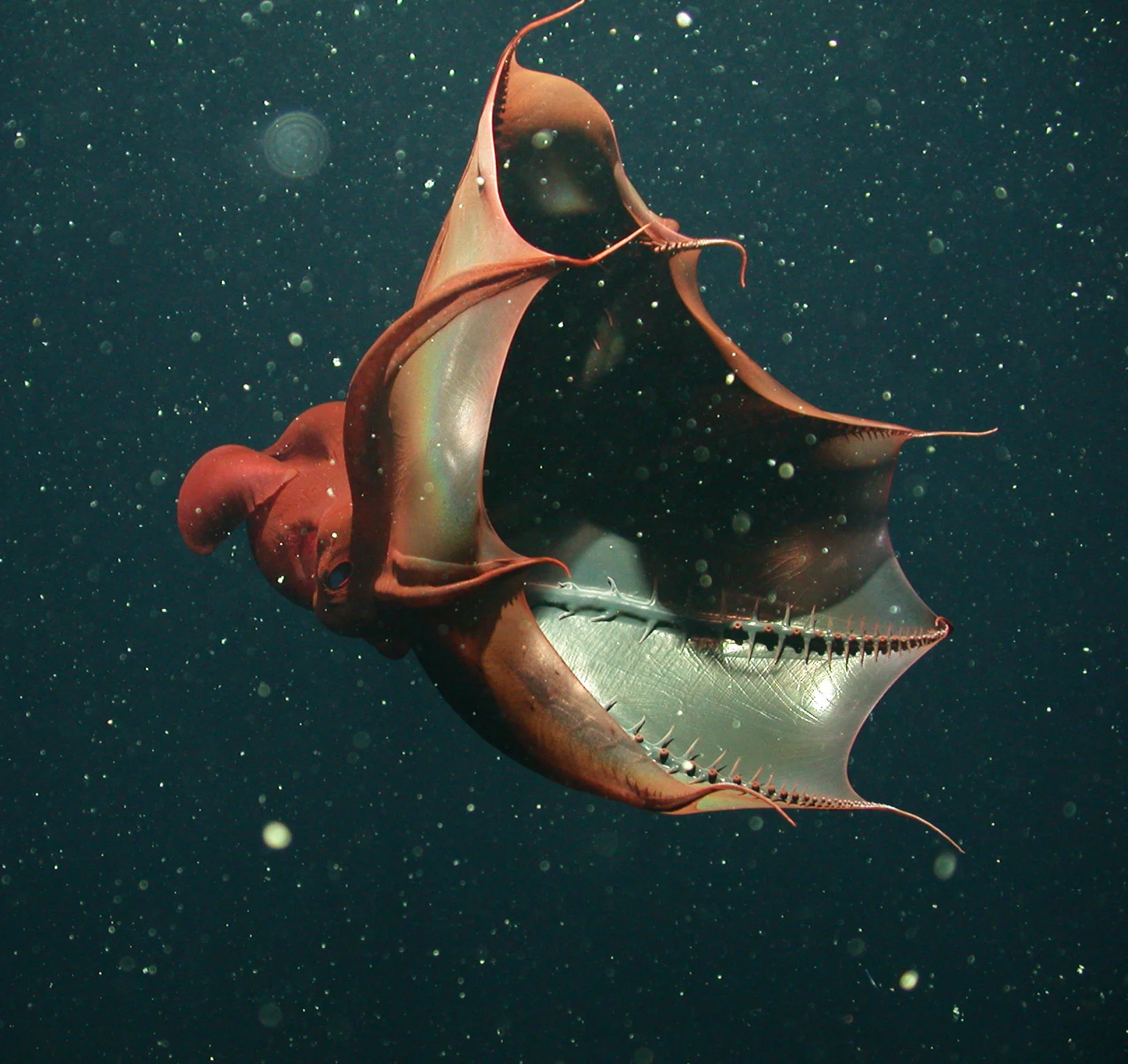
The deep sea is home to some of the most mysterious and fascinating creatures on Earth, and among them, the vampire squid stands out with its unique adaptations and captivating appearance. Despite its menacing name, this enigmatic cephalopod is far from a bloodthirsty predator. In this article, we will explore the intriguing world of the vampire squid, delving into its unique characteristics, survival strategies, and the scientific research that sheds light on its mysterious life.
The vampire squid (Vampyroteuthis infernalis) is a master of disguise and adaptation, thriving in the oxygen-depleted depths of the ocean, known as the oxygen minimum zone. Unlike other squids, the vampire squid has large, blue eyes and a webbing of skin connecting its eight arms, which are lined with light-producing organs called photophores. These photophores can produce bioluminescent displays, which the squid uses for counter-illumination and to startle predators.
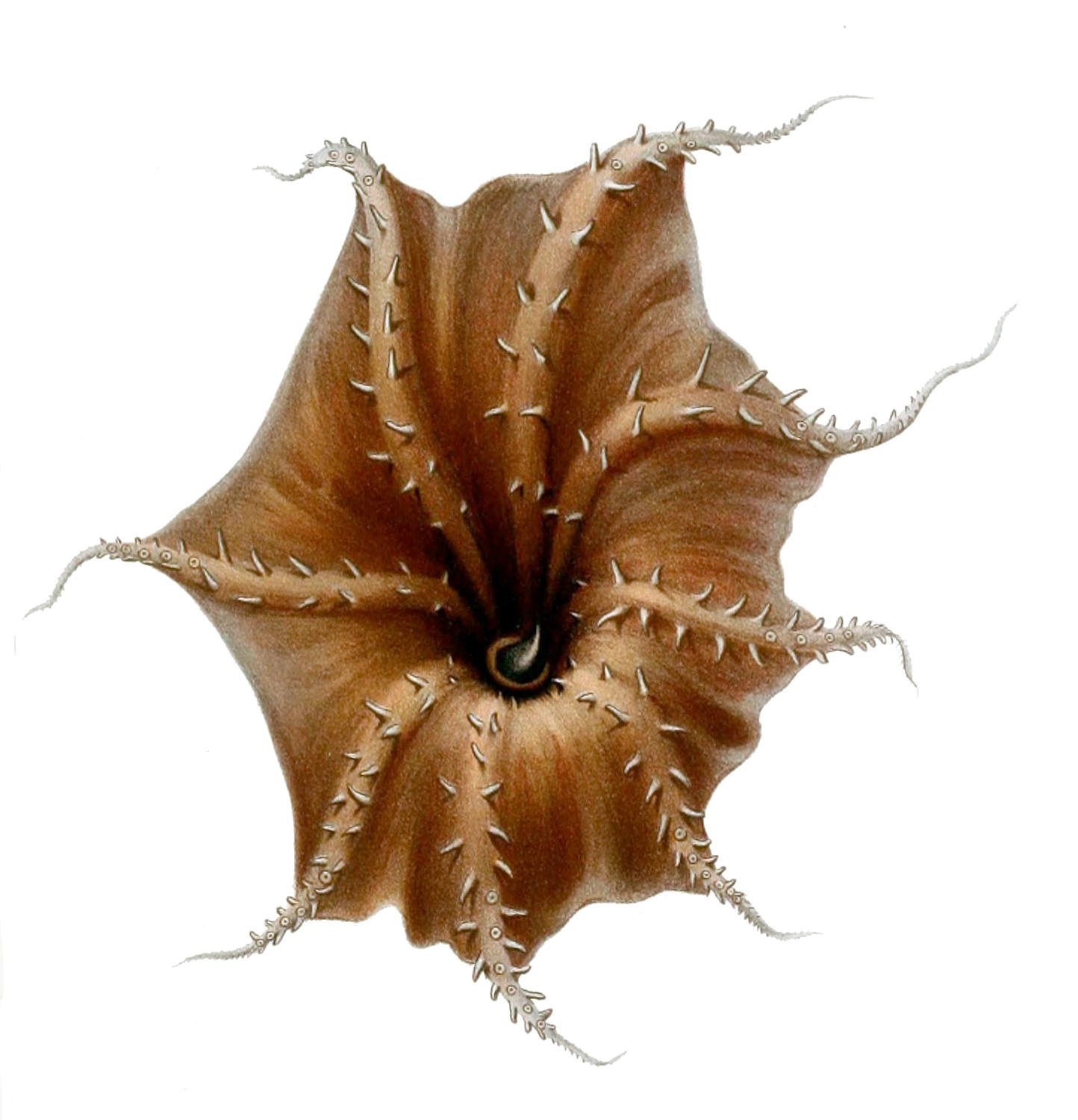
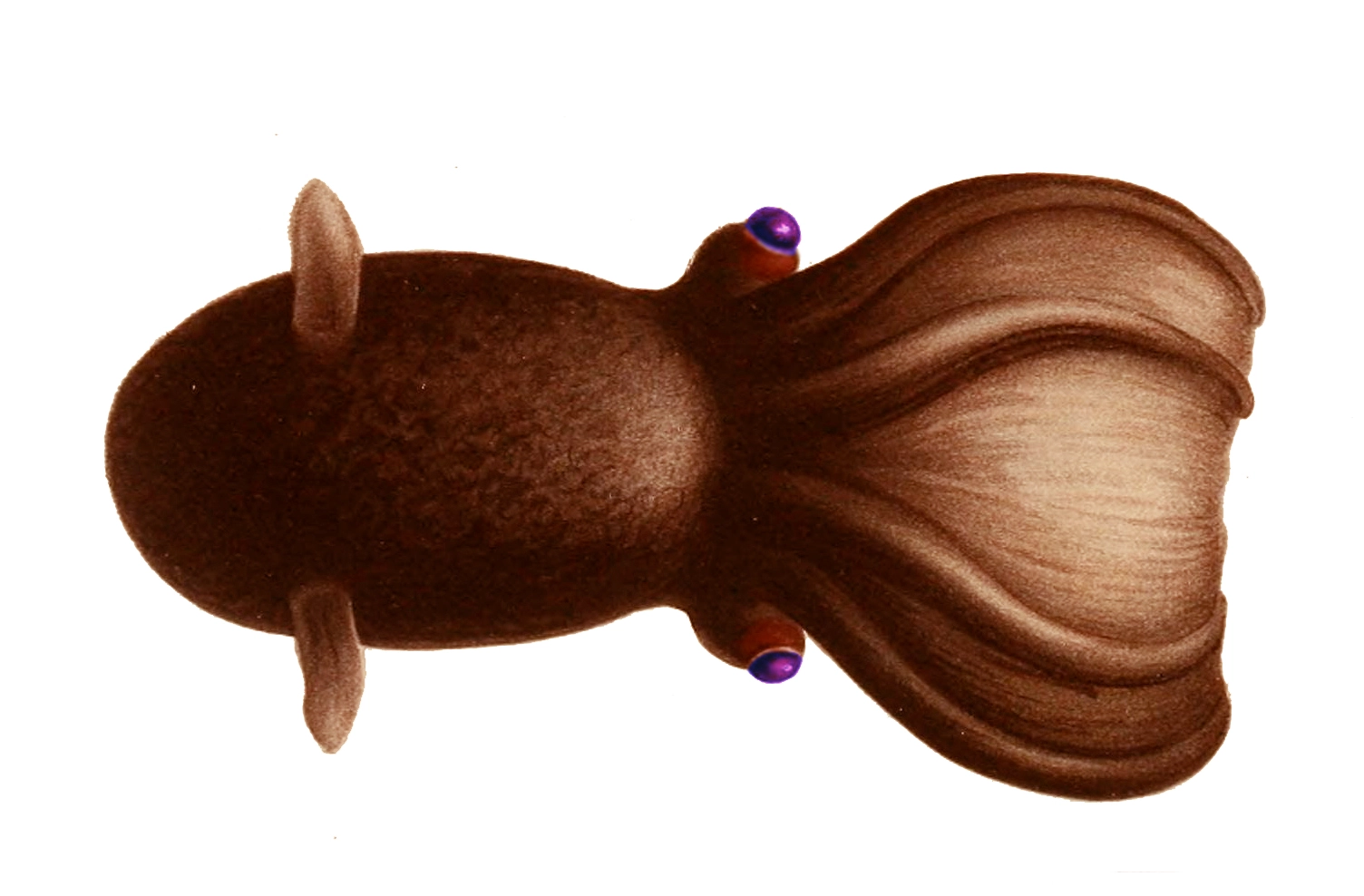
Dorsal view (Carl Chun derivative work: Mgiganteus) & Oral view (from Thiele in Chun, C. 1910. Die Cephalopoden)
One of the most remarkable features of the vampire squid is its ability to turn itself inside out, exposing spiny, fleshy projections on its arms, which resemble a terrifying display but are actually harmless. This defensive mechanism, along with its ability to produce a cloud of bioluminescent mucus, helps it evade predators in the dark depths.
The vampire squid belongs to the order Vampyromorphida, which is the extant sister taxon to all octopuses. This means that while it shares some characteristics with squids, it is more closely related to octopuses. This unique evolutionary lineage places the vampire squid in a fascinating position within the cephalopod family tree, bridging the gap between squids and octopuses.
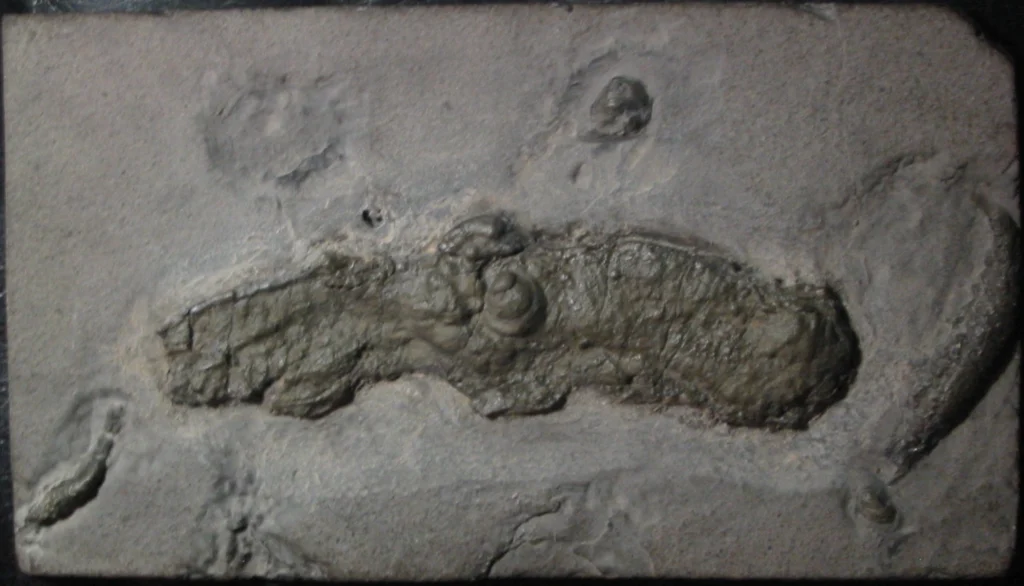
“Pyritized fossil of Vampyronassa rhodanica from the Lower Callovian of La Voulte-sur-Rhône.”
The life cycle of the vampire squid is adapted to the extreme conditions of the deep sea. Unlike many cephalopods that have a single breeding season, female vampire squids can produce multiple batches of eggs over their lifetime. This reproductive strategy, known as iteroparity, is rare among cephalopods and allows the vampire squid to maximize its reproductive success in a challenging environment.
“Dissected adult (center) and two immature specimens”
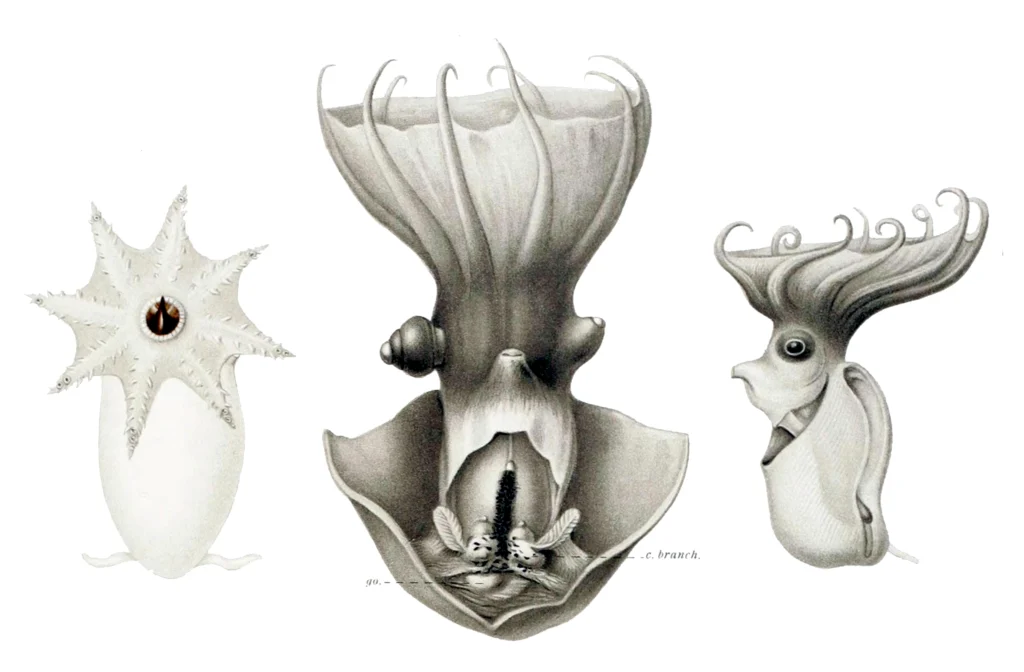
The development of vampire squid eggs is a slow process, with embryos taking several months to develop before hatching. Juvenile vampire squids are miniature versions of adults and continue to grow and develop their unique features as they mature. This extended developmental period is another adaptation to the deep-sea environment, where food can be scarce and conditions are harsh.
The vampire squid’s adaptations to the deep-sea environment are nothing short of extraordinary. Living in the oxygen minimum zone, where oxygen levels are as low as 3%, the vampire squid has a very low metabolic rate, allowing it to survive in such harsh conditions. It also has specialized gills that are highly efficient at extracting oxygen from the water.
Unlike its predatory relatives, the vampire squid is a detritivore, feeding on “marine snow” – a mixture of dead plankton, fecal pellets, and other organic material that drifts down from the upper layers of the ocean. Using its long, sticky filaments, the vampire squid captures these particles and transports them to its mouth, making it a key player in the deep-sea ecosystem’s nutrient cycle.
The behavior of the vampire squid is as fascinating as its physical adaptations. It is a relatively slow swimmer, using gentle movements of its fins and arms to navigate the deep sea. When threatened, the vampire squid employs a variety of defensive behaviors, including its unique ability to turn itself inside out and produce bioluminescent mucus clouds to confuse predators.
Despite living in the dark depths, the vampire squid has highly developed eyes that can detect the faintest traces of light. This sensitivity to light helps it avoid predators and locate food particles drifting down from the upper ocean layers. The vampire squid also exhibits a behavior known as counter-illumination, where it uses its photophores to match the light coming from above, making it less visible to predators below.
Recent research on the vampire squid has provided fascinating insights into its biology and behavior. Scientists have used remotely operated vehicles (ROVs) to observe vampire squids in their natural habitat, capturing rare footage and collecting valuable data. One significant finding is the squid’s unique reproductive strategy: rather than having a single breeding season, female vampire squids can produce multiple batches of eggs over their lifetime, a rare trait among cephalopods.Genomic studies have also revealed intriguing information about the vampire squid’s evolutionary history. Despite its name, the vampire squid is not closely related to true squids but instead represents a unique branch of the cephalopod family tree, having diverged from other members around 300 million years ago. This ancient lineage makes the vampire squid a living fossil, offering a glimpse into the evolutionary past of cephalopods.
To bring a personal perspective to this deep-sea marvel, we spoke with Dr. Emily Johnson, a marine biologist who has spent over a decade studying vampire squids.
"Encountering a vampire squid in its natural habitat is a surreal experience," Dr. Johnson shared. "Their bioluminescent displays and unique behaviors are mesmerizing. One of the most memorable moments of my career was observing a vampire squid deploying its defensive mucus cloud to evade a predator."
While the vampire squid may not have the same cultural prominence as other deep-sea creatures, it has inspired a sense of wonder and fascination in popular culture. Its eerie appearance and mysterious nature have made it a subject of interest in documentaries, literature, and art. The vampire squid’s ability to thrive in one of the most extreme environments on Earth serves as a powerful symbol of resilience and adaptation.
[Stunning Footage of Vampire Squids Infographic: Vampire Squid Adaptations Virtual Tour of the Deep-Sea Environment]
The vampire squid is a testament to the incredible adaptability and diversity of life in the deep sea. Its unique characteristics, survival strategies, and ancient lineage make it one of the most fascinating creatures in the ocean. As we continue to explore and study the deep sea, the vampire squid remains a symbol of the mysteries that lie beneath the surface, reminding us of the resilience and wonder of the natural world.
By understanding and appreciating these enigmatic creatures, we not only satisfy our curiosity but also highlight the importance of preserving their fragile deep-sea habitats. The vampire squid’s story is a captivating blend of science, mystery, and beauty, offering valuable insights into the complex web of life in our oceans.